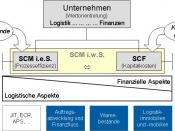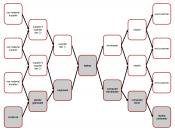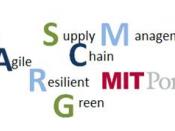Introduction:Supply chain management (SCM) is the combination of art and science of procuring raw components in order to make a product or service and deliver it to customers. According to the Council of Supply Chain Management Professionals (CSCMP), Supply Chain Management "encompasses the planning and management of all activities involved in sourcing and procurement, conversion, and all logistics management activities. Importantly, it also includes coordination and collaboration with channel partners, which can be suppliers, intermediaries, third-party service providers, and customers. In essence, Supply Chain Management integrates supply and demand management within and across companies".
Components of Supply chain management:There are five basic components of SCM.
1. PlanThe plan involves the strategy for managing all the resources that are required to meet customer demand for the product or service. The planning requires developing a set of metrics to monitor the supply chain in order to make it efficient, reduce costs and deliver high quality and value to customers.
2.SourceThis involves identifying and choosing suppliers, developing a set of pricing, delivery and payment processes and creating metrics for monitoring and improving the relationships. This will also outline various processes to manage inventory, receipt of shipments, verification, transfer and supplier payments.
3.Production:This is the manufacturing step and involves scheduling various activities required for production, testing, packaging and delivery. This is the most important step in the supply chain and has direct bearing on quality of product and productivity.
4.DeliverThis is also called the logistics and involves coordination between various activities such as the receipt of orders from customers, developing a network of warehouses, arranging carriers to get products to customers and setting up of an invoicing system to receive payments.
5. Return:This is the most problematic aspect of supply chain and involves receiving defective products back from customers as well...


